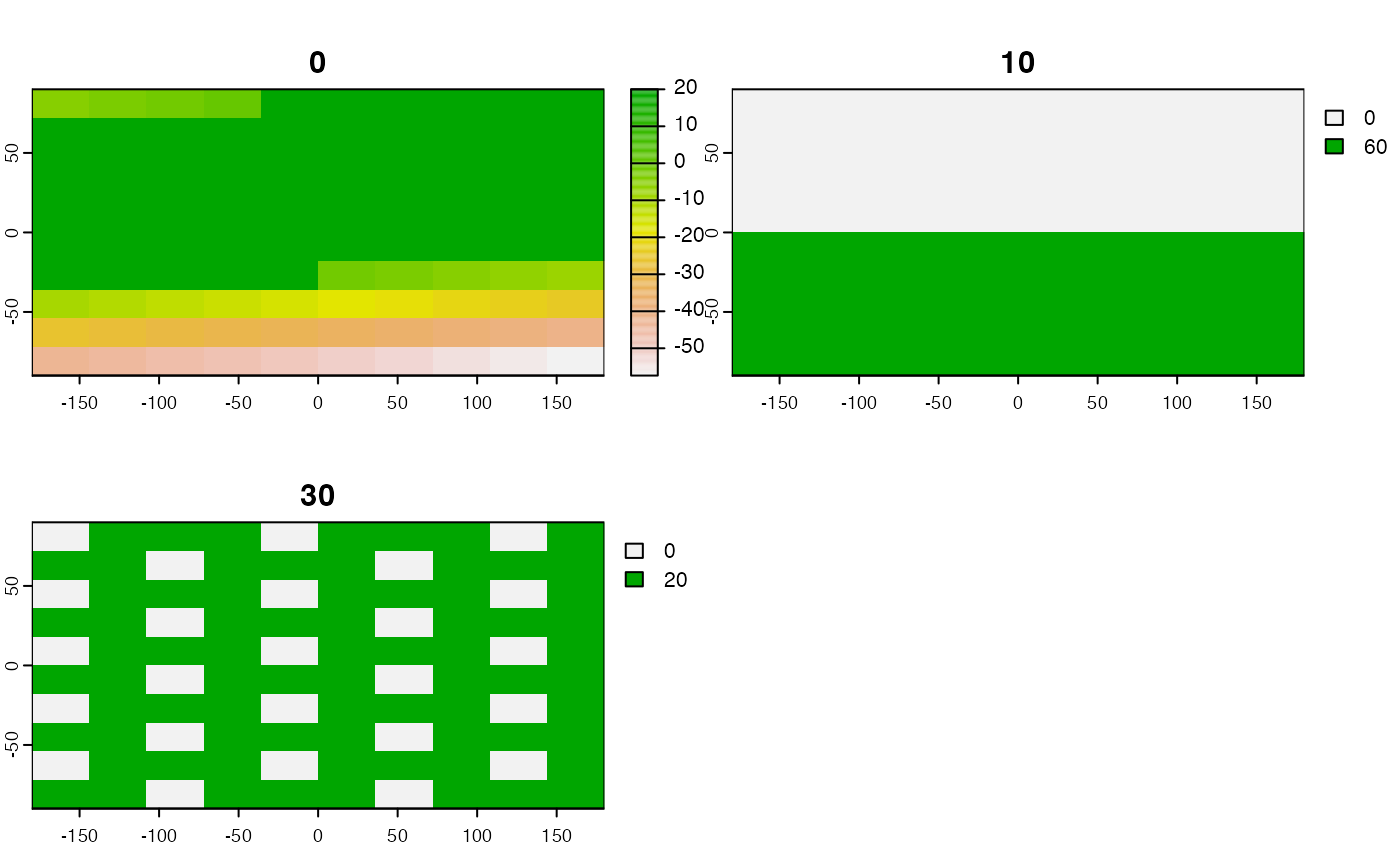Calculates multivariate environmental similarity surface based on model calibration and projection data
MESS3D(calibration, projection)Arguments
- calibration
A
data.frameof environmental variables used to calibrate an ecological niche model, one row for measurements from each voxel included in the data used to calibrate the model. Columns with names not corresponding toprojectionlistitems are ignored.- projection
A named
listofSpatRasterobjects for projection; names correspond tocalibrationcolumn names. EachSpatRastershould have the same number of layers, corresponding to vertical depth slices.
Value
A SpatRaster vector with MESS scores for each
voxel; layer names correspond to layer names of first
SpatRaster vector in projection list.
Details
MESS3D is a wrapper around MESS from the modEvA
package. It calculates MESS for each depth layer. Negative values
indicate areas of extrapolation which should be interpreted with
caution (see Elith et al, 2010 in MEE).
Note
The calibration dataset should include both presences and background/pseudoabsence points used to calibrate an ecological niche model.
References
Elith J, Kearney M, and Phillips S. 2010. The art of modelling range-shifting species. Methods in Ecology and Evolution, 1, 330-342.
See also
Examples
library(terra)
#> terra 1.8.60
library(dplyr)
#>
#> Attaching package: ‘dplyr’
#> The following objects are masked from ‘package:terra’:
#>
#> intersect, union
#> The following objects are masked from ‘package:stats’:
#>
#> filter, lag
#> The following objects are masked from ‘package:base’:
#>
#> intersect, setdiff, setequal, union
# Create sample rasterBricks
r1 <- rast(ncol=10, nrow=10)
values(r1) <- 1:100
r2 <- rast(ncol=10, nrow=10)
values(r2) <- c(rep(20, times = 50), rep(60, times = 50))
r3 <- rast(ncol=10, nrow=10)
values(r3) <- 8
envBrick1 <- c(r1, r2, r3)
names(envBrick1) <- c(0, 10, 30)
r1 <- rast(ncol=10, nrow=10)
values(r1) <- 100:1
r2 <- rast(ncol=10, nrow=10)
values(r2) <- c(rep(10, times = 50), rep(20, times = 50))
r3 <- rast(ncol=10, nrow=10)
values(r3) <- c(rep(c(10,20,30,25), times = 25))
envBrick2 <- c(r1, r2, r3)
names(envBrick2) <- c(0, 10, 30)
rastList <- list("temperature" = envBrick1, "salinity" = envBrick2)
# Create test reference set
set.seed(0)
longitude <- sample(ext(envBrick1)[1]:ext(envBrick1)[2],
size = 10, replace = FALSE)
set.seed(0)
latitude <- sample(ext(envBrick1)[3]:ext(envBrick1)[4],
size = 10, replace = FALSE)
set.seed(0)
depth <- sample(0:35, size = 10, replace = TRUE)
occurrences <- as.data.frame(cbind(longitude,latitude,depth))
# Calibration
calibration <- lapply(rastList, FUN = function(x) xyzSample(occurrences, x)) %>% bind_rows
#> Using longitude, latitude, and depth
#> as x, y, and z coordinates, respectively.
#> Using longitude, latitude, and depth
#> as x, y, and z coordinates, respectively.
# Run the function
messStack <- MESS3D(calibration = calibration, projection = rastList)
plot(messStack)
